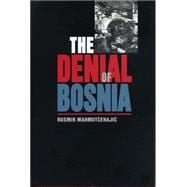Mahmutcehajic (pronounced "ma-moot-che-HI-itch") argues for the history and reality of a Bosnia-Herzegovina based upon a model of "unity in diversity". He shows that ethnic and religious cultures have coexisted in Bosnia for centuries. Partitioning of Bosnia, therefore, should have been unthinkable except that a multi-ethnic, multi-faith Bosnia stood squarely in the way of Croatian and Serbian leaders determined to enact their own nationalist programs. The decisive moment came








